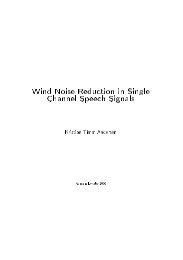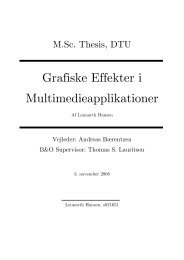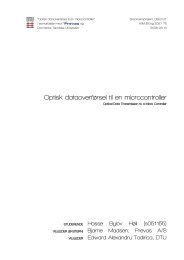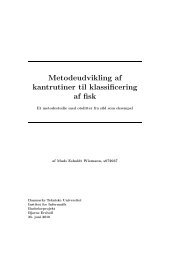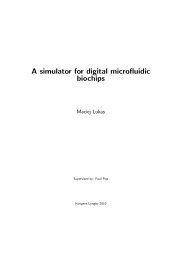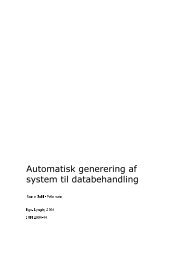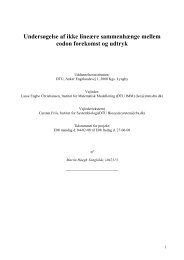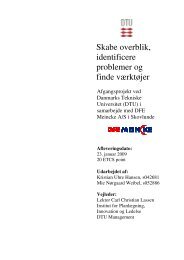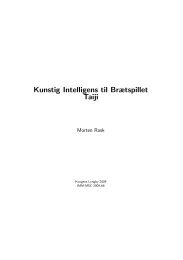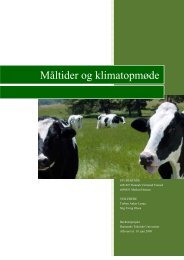AIR Tools - A MATLAB Package for Algebraic Iterative ...
AIR Tools - A MATLAB Package for Algebraic Iterative ...
AIR Tools - A MATLAB Package for Algebraic Iterative ...
You also want an ePaper? Increase the reach of your titles
YUMPU automatically turns print PDFs into web optimized ePapers that Google loves.
2.3 Spectral Filtering 9<br />
2.3 Spectral Filtering<br />
Due to the difficulties associated with the discrete inverse problems the naive<br />
solution x = A −1 b is useless since it is becomes dominated by the rounding<br />
errors. We will in this section introduce two spectral filtering methods, which<br />
can be expressed as a filtered SVD expansion on the <strong>for</strong>m:<br />
xfilter =<br />
min{m,n} <br />
i=1<br />
ϕi<br />
〈ui, b〉<br />
vi,<br />
where ϕi are the filter factors <strong>for</strong> the corresponding method. We will first<br />
introduce the truncated SVD method (TSVD).<br />
We realised that the large errors in the naive solution came from the noisy SVD<br />
coefficients corresponding to the smallest singular values but we also noticed that<br />
the SVD coefficients <strong>for</strong> large singular values were useful, since these coefficients<br />
fulfilled 〈ui,b〉<br />
σi ≃ 〈ui,¯b〉 , where b is the noisy right-hand side and σi<br />
¯b is the righthand<br />
side without noise. This leads to the truncated SVD (TSVD) method<br />
where we choose only to include the first k components of the naive solution<br />
to x. With this method we there<strong>for</strong>e cut off those SVD coefficients that are<br />
dominated by inverted noise. We define the TSVD solution as<br />
xk =<br />
σi<br />
k 〈ui, b〉<br />
vi,<br />
i=1<br />
where we call k the truncation parameter and k must be chosen such that all<br />
the noise-dominated SVD coefficients are discarded. This leads to the following<br />
filter factors <strong>for</strong> the TSVD method:<br />
ϕi =<br />
σi<br />
1 i ≤ k<br />
0 i > k.<br />
The second method we will introduce the Tikhonov regularization. For this<br />
method the filter factors is defined as<br />
ϕi =<br />
σ 2 i<br />
σ 2 i<br />
+ ω2 , i = 1, · · · , n,<br />
where ω is the regularization parameter, which in a sense corresponds to the<br />
truncation parameter k. The Tikhonovs regularization corresponds to the following<br />
minimization problem<br />
min<br />
x {Ax − b 2 2 + ω2 x 2 2 }.



